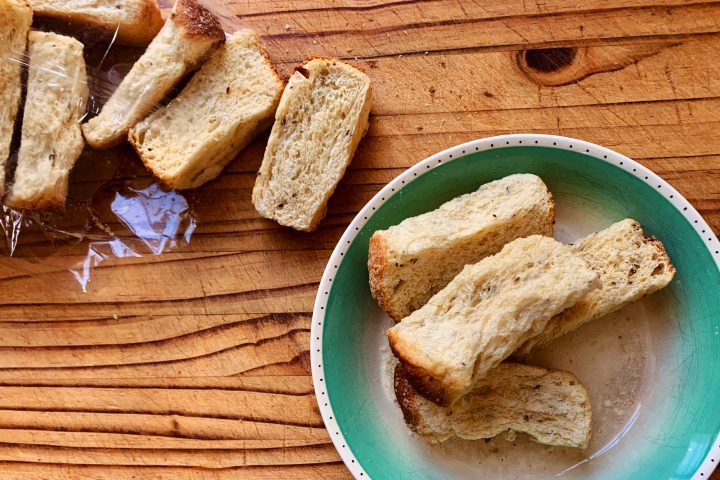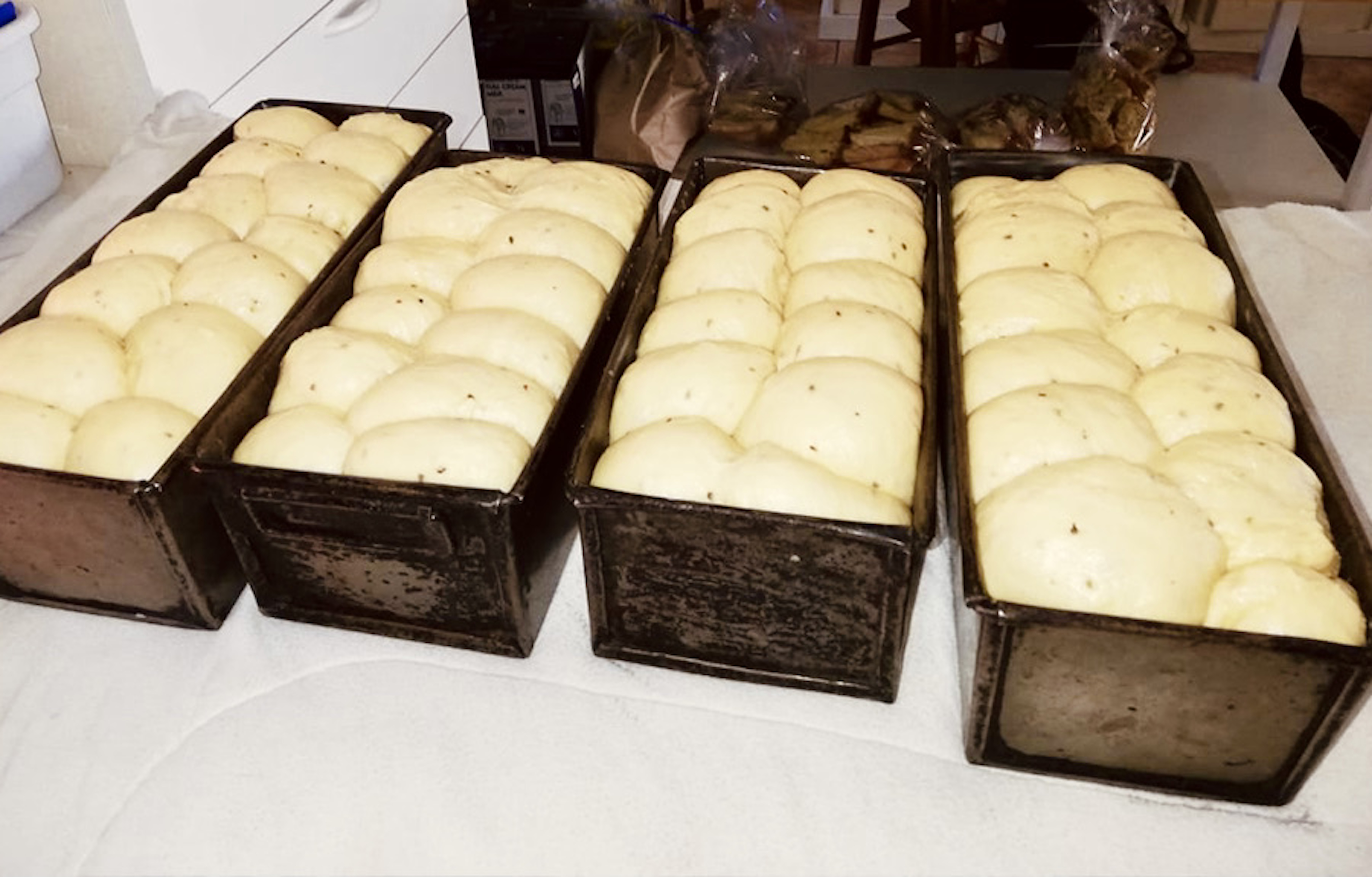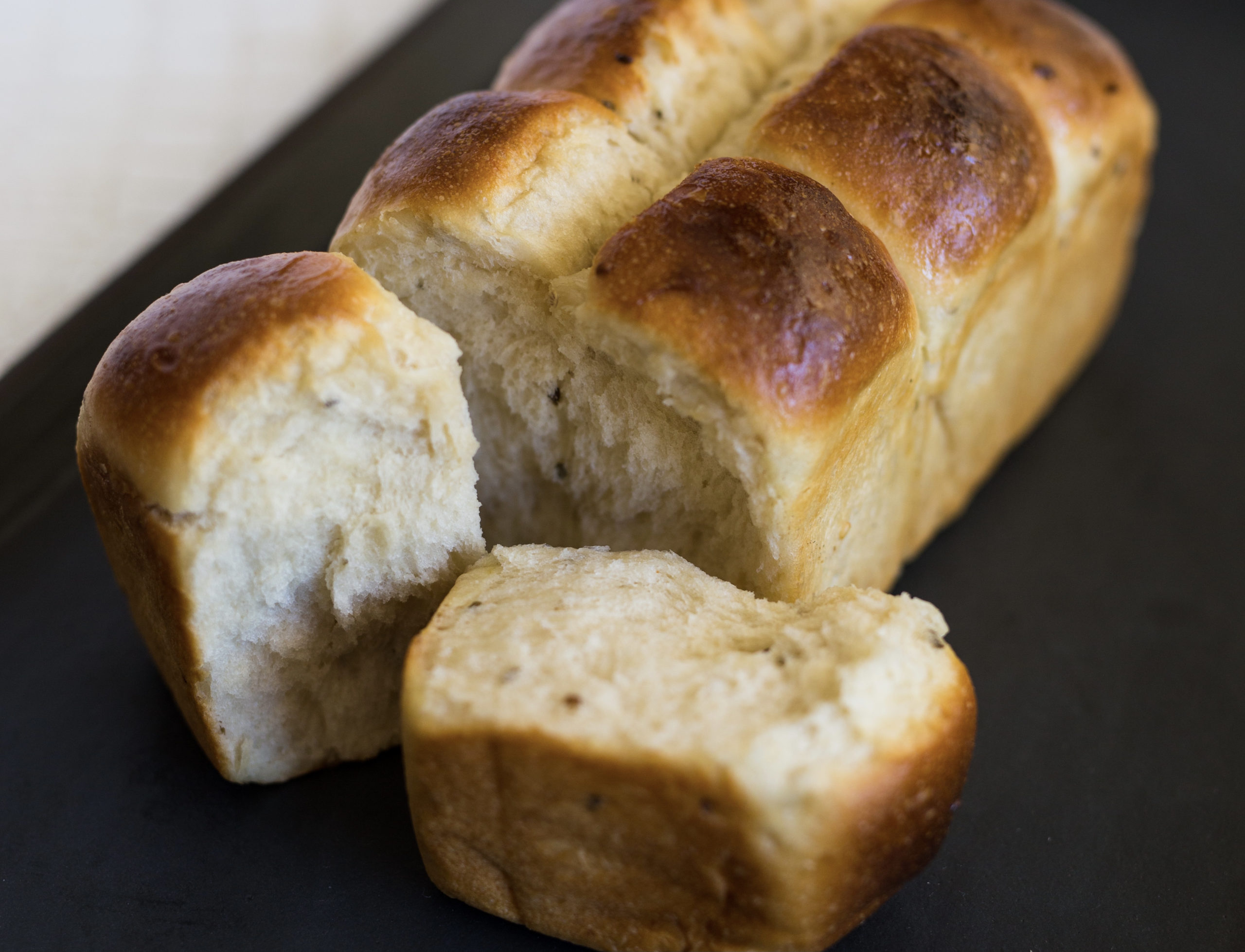KITCHEN HEROES
A dance with dough for the king and queen of soetbeskuit

Baking ‘soetbeskuit’ – the top tier of the rusk pyramid – is a three-day marathon that starts long before the water hits the flour.
The art of baking old-fashioned soetbeskuit is considered to be the top tier of the rusk pyramid. Buttermilks can be seen as the laat lammetjies; easygoing crowd-pleasers with many friends. Unsweetened boerbeskuit, again, is undoubtedly the outlier; the middle child. But soetbeskuit is the saint of the bunch; the first-born of the rusk family excelling in all fields. It is a deity of taste and texture and, with each new generation, it carries forth the respected family name.
To achieve those long strands of crisped brioche-like gold found in any self-respecting log of soetbeskuit looks easy. For Anita Gerber from Cradock in the Eastern Cape, it took only 45 years for it to be easy… and with a little bit of help. For the past 45 years, she and her baking partner cum husband Bennie have been a baking twin force of the Karoo Heartland. Anita, armed with a family recipe, traditional potato yeast starter and a fridge-full of beef lard, and Bennie, with the brute strength needed to knead 12kg worth of soetbeskuit at a time.
Together, Nita (as the locals call her) and Bennie spoiled Cradock locals for decades with nostalgic dishes like puff pastry milk tart and old-fashioned biscuits, delivered fresh at the local home industry Dit & Dat each week. Most loved, however, was the Gerbers’ traditional soetbeskuit with aniseed. Perfectly flaky and light and, when dunked, thirsty enough to soak up a small cup of tea entirely, these morsels were ever-present in many a Cradock household. It was a treasure we only realised we had once the Gerbers moved to Port Elizabeth in 2011, and their steady supply of baking perfection dried up.
In the Gerbers’ heyday of baking up until 2018, Anita was the primary baker while Bennie provided the physical manpower for kneading their famous soetbeskuit. Nowadays, Anita says, she makes smaller batches for a few dear clients as the constant hard work was taking its toll. Understandably. Baking soetbeskuit is a three-day marathon that starts long before the water hits the flour.

Loaves of aniseed soetbeskuit rising on an electric blanket… in the days before the electrical short-circuit. (Photo: Bennie Gerber Jnr)
Preparation includes growing the traditional potato yeast starter that Anita got from her late Aunt Levina Nel. “When I was growing up, my mom worked long hours after my dad’s passing. So over the weekends, we’d go to Aunt Levina’s farm outside Cradock with all my cousins. They were all boys. I used to watch her bake soetbeskuit with the potato plantjie and a disk of dried hops. I don’t add hops to my recipe anymore because you can’t buy it in the shops like you used to. I guess people prefer drinking beer to eating soetbeskuit! Anyway, when I started baking for Dit & Dat in January 1975, Aunt Levina gave me a bit of her potato plantjie so I could bake the soetbeskuit. I’ve been baking with it ever since.”
In Anita’s fridge, currently, sits six bottles of Aunt Levina’s potato yeast fermenting in anticipation… The starter is activated by adding flour and water to the fermenting mass and then waiting until it’s risen enough to bake with. “Then I add my other ingredients. It needs to be a loose dough,” she says. “This is the secret to getting those perfect rusk feathers. A loose dough is difficult to work with, especially since you have to knead in the butter while you go. And you have to knead it a lot… until it makes those little squeaky bubbles when you cut into the dough. If you don’t knead enough they will be too rough and your rusk will crumble to pieces when you try flaking them.

Traditional ‘mosbeskuit’, made with grape must, was the Winelands version of ‘soetbeskuit’ as we know it today. ‘Mosbeskuit’ is believed to be the first variant of this type of ‘long rusk’. Later on, when Afrikaners moved away from the Cape region with its vineyards, substitutes for grape must such as potato yeast were used. (Photo: Ian du Toit)
“The kneading needs to be done by hand,” Anita says, “because of the butter. If you knead it in a machine, it won’t have the warmth of your hands. The dough doesn’t want to get cold. Once it goes cold, it won’t rise.”
No measures are spared to ensure this critical part of the process. Legend has it that the Gerbers had dedicated electrical blankets for the dough babies to rise during those cold Karoo nights. Anita affirms the rumours but says it didn’t last long. “One night, the blanket short-circuited and caught fire! That was the end of it. I’m back to the old ways now… placing a warmed pouch of wheat between the blankets and on top of the enamel bowl whenever I leave the dough to rise.
“When the neighbours’ kids came around, they always used to joke that there was someone asleep on the dining room table,” Anita laughs. “The dough was tucked in beneath at least six blankets!
The Gerbers’ son, Bennie Junior, remembers having to fight off bolletjies of dough sitting on the kitchen table as a small kid. “We used to eat the offcuts and rejects that couldn’t be sold. Too much of it. As children, my parents also made us eat a few large chunks before visiting other people so we didn’t look too hungry!” he laughs.
“These days, I don’t get particularly excited about soetbeskuit when I walk into mom’s kitchen. But I remember when I was studying and money was running low towards the end of the month, having a pack of rusks from the folks was always welcome. A dunked piece with morning coffee is pure comfort. My parents are now in their 70s and still working as hard as youngsters. They’ve never complained about their baking business. It’s part of who they are.”
Anita bakes for a small clientele nowadays. “Only for orders. I used to have over 70 regular clients in PE, but I wanted to scale down and now only bake when it suits us.”
One of the biggest secrets of baking soetbeskuit, Anita believes, is using traditional beef fat to grease the pans. “I use the hard inner fat and then render it out slowly, like when making kaiings (small bits of inner animal fat that have been rendered down in a pot on slow heat until very crispy… almost like crackling). It’s then portioned and frozen until needed. At room temperature, it’s pliable like butter.”
Beef fat in rusks may seem crazy, but it’s a nod to the origins of rusks as preserved pieces of bread that could withstand long journeys with fluctuating temperatures. Traditional, unsweetened boerbeskuit, in fact, was often dotted with small pieces of kaiings baked into the dough. Today still, the fat provides an umami flavour to the crust of soetbeskuit and also ensures those glistening dark brown tops.
After the baking comes the flaking and Anita’s trusted method to separate the baked rusks balls before drying is with a fork. “A sharp fork,” she insists. “If you use a knife it will clump together the feathers making the rusk too dense. And then another secret; rusks need to dry for a long time; 12 hours at least in an oven no hotter than 90°C. Otherwise, it will go dense in the middle and not soak when dunked.”
It feels like a lot of secrets to remember if you’re planning on baking it yourself, I’ll admit. Even Bennie Junior says knocking about 10 kilos of dough for an hour is tougher than you’d imagine. Only the brave would dare. But after decades, for the Gerbers, dedication to traditional baking is a practised dance that does what soetbeskuit was originally intended to do. It’s to comfort the weary on long treks in life. To take the edge off rushed mornings when the kids need breakfast on the run. To stuff those same kids ahead of a party with friends if needs be. And fundamentally, to respect the most basic of ingredients and capture taste and texture through devotion.
This is Tannie Nita’s recipe for traditional soetbeskuit… for the brave with strong arms.
For the potato yeast starter
3 cups potato starter at room temperature
½ cup white sugar
½ cup cake flour
For the ‘Soetbeskuit’
Doubled-up potato starter
24 cups cake flour
1 Tbsp salt
375g Spar margarine
3 large eggs, whisked
4 cup white sugar
1 ½ cups fresh milk
4-5 cups warm water
Method
Mix together the starter ingredients and wait until it doubles in size.
For the rusks. Use potato starter and add to it the eggs, milk and aniseed. Dissolve the sugar in the warm water before adding it to the yeast mixture.
Sieve together the flour and salt in a large enamel dish. Make a well in the centre and add the yeast mixture. Using your hands, start in the centre and incorporate more and more flour until a loose dough forms.
Knead. Knead. Knead. Add the butter bit by bit while kneading until fully incorporated. The dough can rest when it squeaks when folded.
Rest throughout the night in a warm spot. The dough may not get cold!
After a night’s rest, pinch off small balls of dough and place snuggly in a loaf tin. Wait until the balls have risen ⅓ of the pan.
Bake at 180°C until risen out of the tin and golden brown on top.
Remove from the oven and allow to cool. Remove from the pan and cool completely.
Using a sharp fork, carefully tear the undried rusks apart. Place on a drying rack and dry in a cool oven (all ovens differ, but no hotter than 90°C) with the oven door held ajar with a wooden spoon. Dry for at least 12 hours. DM/TGIFood



 Become an Insider
Become an Insider
Comments - Please login in order to comment.